I was reading the DAC902 datasheet. On page 13, Figure 4:

They basically mention that the 26.1 ohm resistor is in parallel with R4 to give an equivalent resistance of 25 ohm, which does makes sense. Now, they also mention that the 28.7 ohm resistor is in parallel with one of the 200 ohm resistors, I'm assuming its R3. How does that work out?
They don't seem like they are in parallel.